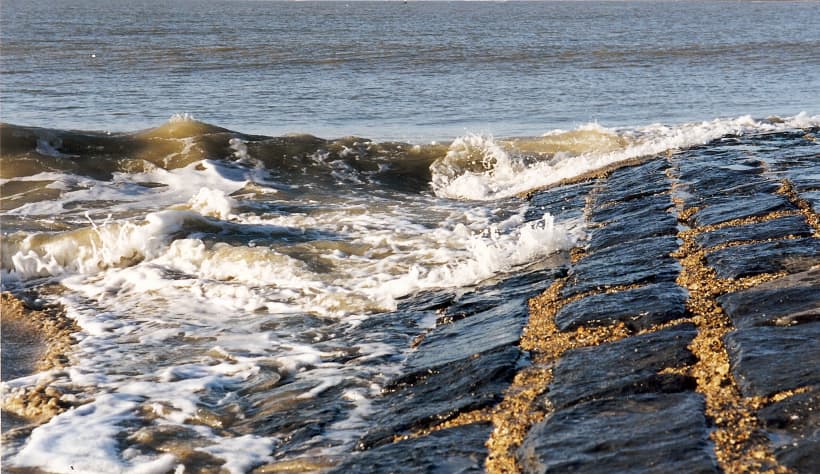On 22 December 2017, the Government of Flanders decided to develop a long-term ‘Coastal Vision’. This Coastal Vision project will determine the socially most desirable measures necessary to gradually protect our coast and the hinterland against a sea level rise of up to 3 metres in the long term, and subsequently preserve the coast for our grandchildren’s children to enjoy.
The climate is changing

Our climate is changing. The atmosphere is warming up due to the increase in greenhouse gases. As a result, seas and oceans are expanding and ice sheets and glaciers are melting, causing sea levels to rise.
The past 100 years have already seen a slow and gradual sea level rise of 2mm per year. International climate experts predict that we can still expect a considerably greater and faster sea level rise before the end of this century.
Our coast is vulnerable
Our coast and its hinterland are very vulnerable to the consequences of climate change. This is due to their low position, the dense built-up environment and the intensive use of the coast.
The rising sea level presents an additional challenge to permanently protect our coast and ensure the safety of the people. Moreover, the accessibility of the coastal ports may be jeopardised. The hinterland, too, will face more and more problems. For instance, it will be much harder for rivers and canals to drain into the North Sea, and the progressive salination of the polders may be triggered.
Additional interventions required following the Coastal Safety Master Plan

The Government of Flanders is already working on coastal protection via the Coastal Safety Master Plan, which has been implemented in all coastal municipalities since 2011. The Coastal Safety Masterplan aims to protect the Flemish coast area against the so called ‘millenial storm’ until at least 2050. To this end, several works are already implemented, in execution or planned in 10 coastal communities to improve resilience of the coast to withstand superstorms. The weakest areas are tackled first. The Master Plan includes the realisation of a storm surge barrier in Nieuwpoort and the introduction of flooding measures in the inner port of Ostend.
The objective of the Master Plan is to protect the coastal region until 2050 against a 1,000-year storm. The Coastal Safety Master Plan takes into account a sea level rise of up to 30 cm by 2050. It was developed on the basis of the then available climate scenario. Meanwhile, however, we know that the sea level will rise faster and more strongly after 2050 and that additional efforts will have to be made on top of the interventions set out in the Master Plan, in order to protect the entire coast from flooding post 2050.
Therefore, on 22 December 2017, the Government of Flanders took the initial decision to draw up a ‘Coastal Vision’ together with all the relevant stakeholders. With the Coastal Vision project we seek to look beyond the Coastal Safety Master Plan and develop a long-term approach to protecting our coast.
What is about to happen?
The key objective is to protect the coast against a 1,000-year storm, even beyond 2050. For this reason, the Government of Flanders is examining which measures need to be taken in addition to the interventions outlined in the Coastal Safety Master Plan. The goal is to ensure that our coast and the hinterland are protected against a higher and faster sea level rise on a longer timescale.
The rate and magnitude of the sea level rise are difficult to project in advance. In order to be adequately prepared and to be able to respond quickly, an adaptive coastal protection approach is taken. In this context ‘adaptive’ means a level of coastal protection that is relatively easy to adjust. The aim is to not just maintain the level of safety, but to also extend the lifespan of the infrastructure in the event of accelerating sea level rises.
In order to shape the adaptive character more clearly, we are studying three scenarios: protecting the coast and the hinterland from a sea level rise of up to 1 metre, up to 2 metres and up to 3 metres. In addition, we are examining how we can gradually upgrade the level of protection and which are the tipping points for implementing such an upgrade.